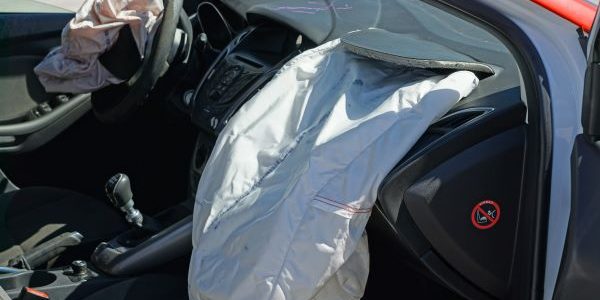Airbags help save lives, but they also come with certain risks. Airbags automatically inflate in the event of a collision. But they don’t always go off. There’s a reason for that and it has nothing to do with a malfunction. It’s all about the electrical connection between the impact sensor and the air bag.
The electrical connection in an airbag system is crucial for proper deployment. Here’s how it affects the process:
- Sensor Activation: Crash sensors detect sudden deceleration and send an electrical signal to the airbag control module.
- Control Module Decision: The module processes data and determines if airbag deployment is necessary.
- Igniter Activation: If deployment is required, an electrical current travels to the airbag igniter, which triggers a chemical reaction.
- Gas Inflation: The reaction generates gas (usually nitrogen or argon) to rapidly inflate the airbag.
- Airbag Deployment: The inflated airbag cushions the occupant to reduce injury.
Electrical Connection Issues and Their Effects:
- Loose or Corroded Wires: Can cause failure to deploy or accidental deployment.
- Faulty Sensors: May not detect a crash properly, leading to no deployment or unnecessary deployment.
- Blown Fuses or Disconnected Battery: Can disable the entire airbag system.
- Short Circuits: Can cause unintended deployment.
Regular maintenance and diagnostic checks help ensure the airbag system functions correctly. Proper deployment can help save lives.
Benefits of airbags
Once the bag is full of air, it protects a driver and/or passenger by:
- Increasing cushioning around the neck, head, and spine.
- Decreasing the amount of force impacting a person’s head by limiting the distance it can fling forward.
- Decreasing the risk that a victim will project through the window or be ejected from the car.
Without an airbag to prevent impact forces, accident victims could easily succumb to fatal injuries such as broken necks, severed spinal cords, traumatic brain injuries, or lethal lacerations.
Risks of airbags
- Deployment ignition. The electrical signal sent to the detonator (that essentially explodes), can ignite gasoline fumes or other flammable components of the vehicle, placing people at risk for serious burns.
- Talcum powder residue. Talcum powder helps release the airbag from the steering wheel. The powder deploys with the airbag, along with a dust cloud that can be harmful for someone with respiratory issues.
- Inflation force. Airbag deployment can reach speeds of up to 200 mph. If your face, chest, or any other body part is too close to the steering wheel when the bag deploys, you could experience severe fractures or internal injuries.
What can you do to prevent injuries from airbags?
- Sit in the center of the seat upright against the seatback with feet on the floor.
- Never rest arms and legs against an airbag.
- Avoid aftermarket dash or seat covers, which can block or redirect a deploying airbag.
- Drivers should sit with their chests at least 10 inches away from the center of the steering wheel.
- Young children should sit in the rear seat.
- Children shouldn’t lean against the door area where the side airbag is stored.
- For women in the late stages of pregnancy, abdomens should be at least 10 inches from the steering wheel. The lap belt should be positioned high on the thighs, below the soft part of the abdomen.
More types of airbags are being added to cars every year. Who knows? Someday your car may be encased in bubble wrap to protect you.
In the event you are in an accident and need repairs, call Sharp Auto Body at (847) 526-1343, a shop you can trust!








